
The Story of the American Expeditionary Forces
|
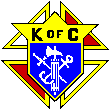
|
THE HISTORY
OF THE
KNIGHTS OF COLUMBUS
IN
WORLD WAR I
|
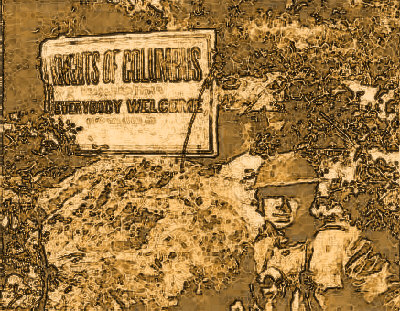
Welcoming Sign at Knights of Columbus Hut

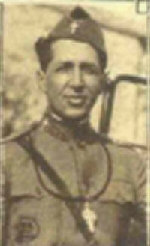
Father Duval, DSC
KOC & 104th Inf. |
"Everyone Welcome, Everything Free" was the motto of the Knights of Columbus clubhouses which sprung up in Doughboy training camps, in major U.S. cities and wherever a Doughboy could be found. Manned by K of C secretaries who were affectionately known as "Caseys" the clubhouses provided recreation and a few of the amenities of home to any serviceman regardless of race or religion. And to Catholic servicemen they provided Chaplains and place to practice their faith.
The Knights were one of the youngest volunteer organizations drawn into support to the AEF. They had been founded October 2, 1881 when a small group of men met in the basement of St. Mary's Church on Hillhouse Avenue in New Haven, Connecticut. Called together by their parish priest, Father Michael J. McGivney, these men formed a fraternal society that would one day become the world's largest Catholic family fraternal service organization. They vowed to be defenders of their country and their families and their Faith. These men were bound together by the ideal of Christopher Columbus, the discoverer of the Americas, the one whose hand brought the Holy Faith to this New World. They called themselves Knights of Columbus.
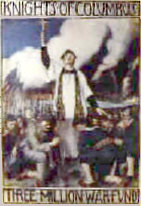
WWI Poster |
During World War I, Supreme Knight James A. Flaherty proposed to U.S. President Woodrow Wilson that the Order establish soldiers' welfare centers in the U.S. and abroad. The Order raised more than $14 million for this program on its own, and was allocated another $30 million from a national fund drive.
The pioneer work was done by half a dozen Knights of Columbus chaplains whoreached France in October 1917 and combined with their priestly duties the activities of Knights of Columbus secretaries. They were given a sum of money and one of them started the first Knights of Columbus club in France, at St-Nazaire, then the principal debarkation port of the AEF. A survey was made and the first group of secretaries arrived in March 1918. They set up headquarters at 16 Place de la Madeleine, Paris, and from that center the activities of the Knights radiated all over France, through England and Scotland, touching on Ireland and Italy, and following the Army of Occupation into Germany.
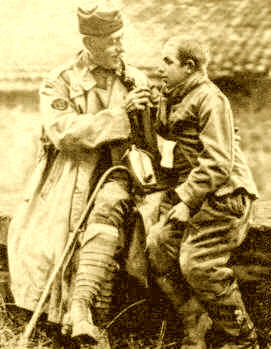
Legendary Casey Uncle Joe Kiernan
Utica, New York
CLUBS AND HUTS: The establishment of clubs and the building of huts for the recreation of the soldiers was an attempt to give the boys a home away from home. The secretaries proved to be incredibly industrious. From their bases at Toul and St-Menehould they would take supplies to the front. Secretaries conveyed commodities along congested roads. They ministered to the men, made their way through the woods to units which had become temporarily cut off from the mess kitchens: they helped with the wounded in the first-aid stations, served hot drinks to the soldiers under fire, acted as stretcher bearers, accompanied and aided the burial details, suffering the same privations and hardships of war as the doughboys.
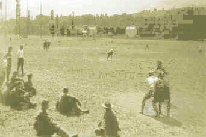
Ballfield Operated by KOC |
During their first month the Caseys passed out 37,719 cartons of chocolate; 25,250 cartons of chewing gum; 14,772 baseballs, 2,286 sets of boxing gloves, and 1,687 football; 10 million sheets of writing paper and 8 million envelopes. In a time when the health impact of smoking was not understood they also distributed 57 million cigarettes. However poor the hut on the front might be, the soldiers loved it. It was "a poor thing but mine own." Here they could write letters, smoke cigarettes, chew gum or drink coffee. Athletics were a special care of the Knights. Many of the leading figures in boxing and baseball such as Johnny Evers of Tinker to Evers to Chance fame crossed the ocean in the service of the Knights and worked the camps. A ballfield and boxing ring were features of many of the Knights of Columbus Clubs.
By the end of the War the Caseys had earned the respect and admiration of many veterans they had served. That admiration led to the largest influx of new Knights ever into the 40-year-old organization at War's end. The Knights work, however, did not end with the War. Following the War the Knights set up employment boards for returning Veterans and later joined with the VFW and American Legion in support of the returned Doughboys. When the K of C war activities officially ended in 1921 the Knights had provided immeasurable support to our Veterans and Universal respect of those they had served.
Editor's notes:
Andrew McLaughlin provide much of the information and photos for this article. Supplemental material was extracted from the Knights of Columbus website. MH
|
To find other Doughboy Features visit our
Directory Page
|
For Great War Society
Membership Information

Click on Icon |
For further information on the events of 1914-1918
visit the homepage of
The Great War Society
|
Additions and comments on these pages may be directed to:
Michael E. Hanlon
(medwardh@hotmail.com) regarding content,
or toMike Iavarone (mikei01@execpc.com)
regarding form and function.
Original artwork & copy; © 1998-2000, The
Great War Society
|







